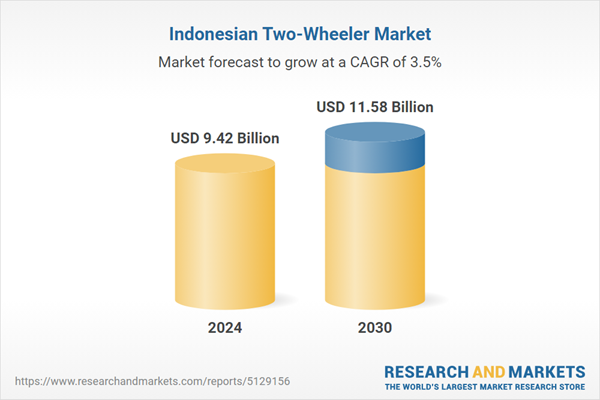Speak directly to the analyst to clarify any post sales queries you may have.
10% Free customizationThis report comes with 10% free customization, enabling you to add data that meets your specific business needs.
Emerging trends within the market point to the growing adoption of electric two-wheelers. The shift towards environmentally friendly transportation solutions is gaining momentum as the government continues to support the development of sustainable infrastructure. As a result, the number of electric scooter and motorcycle offerings in the market is expected to rise significantly. Another notable trend is the increasing popularity of premium two-wheelers, driven by a young and aspirational consumer base seeking higher performance vehicles. Technology integration in vehicles, such as smartphone connectivity, navigation systems, and advanced safety features, also attracts more consumers who are looking for modern, innovative products.
Despite the positive market outlook, challenges persist. One of the main obstacles is the fragmented regulatory environment, which often makes it difficult for manufacturers to navigate the complexities of local laws and requirements. The lack of standardization in infrastructure, particularly in smaller cities and rural areas, also limits the potential growth of two-wheelers in those regions. Lastly, the market faces competition from alternative modes of transport, such as ride-sharing services, which may dampen the demand for personal vehicles in urban centers. Despite these challenges, the Indonesia Two-Wheeler Market continues to expand, driven by innovation and evolving consumer preferences.
Market Drivers
Urbanization and Traffic Congestion
The rapid urbanization of Indonesia has led to an increased demand for personal vehicles. As cities expand, traffic congestion has become a significant issue, particularly in large metropolitan areas. Two-wheelers provide an efficient and practical solution, offering easier maneuverability through crowded streets. The ability to avoid traffic jams and reach destinations faster makes motorcycles an attractive choice for daily commuting, leading to an increased adoption of two-wheelers in urban areas. Urban centers like Jakarta, Surabaya, and Medan are experiencing higher two-wheeler adoption as individuals look for alternative means to avoid traffic. Furthermore, the compact size of two-wheelers makes them easier to park, a major advantage in congested city spaces.Key Market Challenges
Fragmented Regulatory Environment
The two-wheeler market in Indonesia faces challenges stemming from fragmented regulations. Different regions and local authorities may have varying rules regarding vehicle emissions, safety standards, and licensing procedures, making it difficult for manufacturers to standardize their products across the country. The lack of uniformity in regulations can lead to delays in product launches, increased compliance costs, and operational inefficiencies, creating barriers for both domestic and international companies. Navigating these inconsistencies can be time-consuming and costly for companies looking to expand their reach in the market. These regulatory complexities also limit the ability of consumers to easily access the latest models or technologies.Key Market Trends
Shift Towards Electric Two-Wheelers
As environmental awareness grows, there is a notable shift towards electric motorcycles in Indonesia. With increasing concerns over air pollution and fuel consumption, consumers are becoming more interested in sustainable alternatives. The government has also introduced incentives for electric vehicle adoption, creating a favorable environment for electric two-wheelers. This shift is expected to continue as more electric motorcycle models enter the market, offering consumers an eco-friendly option with lower running costs. Electric motorcycles are seen as a cleaner solution, addressing both environmental concerns and rising fuel costs. As charging infrastructure improves, the popularity of electric two-wheelers is set to grow rapidly.For instance, in April 2024, the Indonesian government pledged US$455 million to boost electric motorcycle adoption, targeting the purchase of 800,000 new electric two-wheelers and the conversion of 200,000 existing combustion engine models. The initiative includes a subsidy of Rp 7 million (approximately US$435) per unit to make electric motorcycles more affordable for consumers. This move significantly contributed to the growth of the EV segment, which surged by 62.9% in 2024, marking a historic milestone with 100,000 electric motorcycle sales recorded for the first time in the country.
Key Market Players
- PT Bajaj Auto Indonesia
- PT TVS Motor Company Indonesia
- Yamaha Indonesia Motor Mfg
- PT Layur Astiti Bumi Kencana
- PT Astra Honda Motor
- PT. Smart Motor Indonesia
- Suzuki Indonesia
- PT. Sanyang Industri Indonesia
- Piaggio Indonesia
- PT Kawasaki Motor Indonesia
Report Scope:
In this report, the Indonesia Two-Wheeler Market has been segmented into the following categories, in addition to the industry trends which have also been detailed below:Indonesia Two-Wheeler Market, By Vehicle Type:
- Scooter/Moped
- Motorcycles
Indonesia Two-Wheeler Market, By Propulsion Type:
- ICE
- Electric
Indonesia Two-Wheeler Market, By Region:
- Sumatra
- Kalimantan
- Sulawesi
- Maluku & Papua
- Bali & Nusa
- Java
Competitive Landscape
Company Profiles: Detailed analysis of the major companies present in the Indonesia Two-Wheeler Market.Available Customizations:
With the given market data, the publisher offers customizations according to the company’s specific needs. The following customization options are available for the report.Company Information
- Detailed analysis and profiling of additional market players (up to five).
This product will be delivered within 1-3 business days.
Table of Contents
Companies Mentioned
- PT Bajaj Auto Indonesia
- PT TVS Motor Company Indonesia
- Yamaha Indonesia Motor Mfg
- PT Layur Astiti Bumi Kencana
- PT Astra Honda Motor
- PT. Smart Motor Indonesia
- Suzuki Indonesia
- PT. Sanyang Industri Indonesia
- Piaggio Indonesia
- PT Kawasaki Motor Indonesia
Table Information
| Report Attribute | Details |
|---|---|
| No. of Pages | 85 |
| Published | August 2025 |
| Forecast Period | 2024 - 2030 |
| Estimated Market Value ( USD | $ 9.42 Billion |
| Forecasted Market Value ( USD | $ 11.58 Billion |
| Compound Annual Growth Rate | 3.5% |
| Regions Covered | Indonesia |
| No. of Companies Mentioned | 10 |









